We had barely arrived at the laboratory when a hunting-dog – brown, its pink tongue lolling to one side – came bounding up to one of the visitors, and started clawing at his legs, in the manner of badly-trained dogs everywhere. This visitor, luckily, seemed to have a great fondness for dogs, because he knelt down and began to pet it enthusiastically, the two of them working each other up into ever-greater frenzies of excitement. The dog buried itself, quite unseemingly, between the visitor’s legs and gazed up at him adoringly. The visitor continued to rub its back and scratch its ears, long after the dog itself had fallen still, locked as it was onto the visitor’s navel, still gazing up at his face.
It was when the visitor tried to stand up again that the trouble began. As he started to move, the hunting-dog, firmly clamped around the visitor’s crotch, refused to let go. The visitor gave it a gentle push, but the dog didn’t budge. It was now completely still, its body pressed so firmly into that of the visitor’s that its head had become indistinct from its body, a furry brown slug. The visitor pushed at its head with greater force. It was only when the visitor wrenched at the dog’s head with both hands that he was able to peel it back from his body. In the widening gap between the dog and the visitor’s crotch, there was a trail of thick yellow mucus connecting their two bodies. It was hard to say whether this mucus came from the visitor or the creature. From the way the visitor began to scream when he saw it, I was inclined to say both.
The visitor’s screams, at last, brought a handful of laboratory assistants to our aid. While two of them pulled the creature further off the visitor’s body, causing more of the yellow mucus to pour out, a third took a long metal stick from the wall and jabbed it into the creature’s side. The creature jerked and spluttered violently, and relinquished the last of its grip on the visitor, curling up like a dead brown leech. The visitor, fainting either from the exertion or from the shock and pain emanating from his nether regions, collapsed into a remarkably similar position.
That was my introduction to the recently founded Moros Research Laboratory. It was not the one either I or the laboratory directors would have hoped for, as I had been brought here as a candidate to lead their next expedition. Newly widowed, I had become haunted and persecuted by the all-too-familiar streets of London: the red brick and white stucco of the university buildings, the over-tended gardens where I conducted my botanical research, the high streets where Catherine and I had strolled together. I had recently bought a house for myself and what I had naively imagined would soon be my young family, conveniently close to both my university and the Royal Society. It was now unbearably empty. When I heard of an opportunity to explore the Hesperides, the archipelago in the Indian Ocean which had set the pages of the Proceedings of the Royal Society alight in recent years, it is little wonder that I set off to visit the dedicated laboratory practically that same day.
The Moros laboratory, I was later told, had been purpose-built with many security features to guard against the unique challenges presented by those samples that had been returned from the Hesperides. These security features had so far guarded against any unpleasant incidents of the type that had befallen that unfortunate visitor, a man who I later learned was Dr Vickers, a fellow biologist of reasonable standing in the scientific community, and who had been enquiring after the same position as me. A combination of a reduced laboratory staff and increased number of guests, in the prelude to what would be the largest expedition to the Hesperides yet mounted, had led to guests such as the unfortunate Dr Vickers being ill-prepared for the creatures within.
Soon after Dr Vickers had been removed to the health wing, a sadly necessary adjunct to this laboratory on account of the numerous minor injuries that were befalling the researchers, an enthusiastic botanist who introduced himself simply as Markham led me to one of his own samples, which was thankfully a plant and far less able to attack me in the manner of the dog creature.
The plant, dubbed the ‘succubus tree’ by Markham, was an impressive sample. I could only assume they had brought it here as a seed or sapling and let it grow in situ, for I don’t imagine a team of scientists would have been capable of transporting this plant, the size of a small carriage, to its current location. It squatted in a bed of earth that occupied most of the room, leaving only a narrow observation walkway around the edge. What struck me first was the root system. The plant’s roots extended outwards and down, in the shape of a bell jar. Between each of these legs was a delicate lattice of plant fibre that could have been hand-woven, that enclosed the large area underneath the roots. There was a narrow gap of a few inches between the bottom of this lattice and the earth, all the way around. The trunk itself was diminutive by comparison with this impressive root structure, rising not far from the top of this lattice dome, letting out a handful of leaves.
“You’re familiar with the mechanisms of carnivorous plants such as the Heliamphora nutans or the Nepenthes aristolochioides?” Markham said, rattling off the Latin names with an impressive felicity. “Despite belonging to quite separate plant families, they seem to have acquired similar mechanisms of trapping their prey. They grow long, thin pitchers with a pool of syrup at the bottom. The insect is lured into the pitcher by the promise of syrup, but due to the pitcher’s slippery sides, is unable to get out again, and is slowly digested. This mechanism presents a challenging study for a proponent of Darwin’s, such as myself. How could a plant make the evolutionary transition from autotrophic to carnivorous? Yet this evolutionary transition is evidently possible, as we witness it occurring in multiple evolutionary branches. I think the plant life on Moros Island may provide a clue.”
Moros Island. The smallest and yet most remarkable of the Hesperides, it had somehow been missed by Britain’s explorers and cartographers for generations. Its recent discovery, some distance south of the main cluster, had sent tremors of excitement through the Royal Society. The age of discovery, long presumed to be behind us, had not yet breathed its last; this ever-shrinking globe we inhabit proved itself capable still of holding back some secrets. This laboratory was the product of many early expeditions, which had returned with many exotic forms of plant and animal life, accompanied by tangled and fractured stories of the losses the expedition had to endure to retrieve them. Indeed, it was now clear that Moros Island had been discovered by British expeditions long-forgotten; that these unlucky expeditions had simply failed to return. A ship presumed lost to the bottom of the Indian Ocean had, for example, been found rotting at anchor, in one of the natural bays of the island. The incident with the dog-creature, which I was later informed was known informally as a phobetor, had confirmed the many reports I had already read: that the wildlife of Moros Island had, for reasons we had yet to even speculate on, taken a uniquely vicious evolutionary pathway.
“The succubus tree,” Markham was saying, indicating the plant in front of us, “uses a similar but distinct mechanism to trap its prey. In some ways, it’s simpler than comparative mechanisms in other carnivorous plants, but in others, it’s more complicated, and points to a sensory faculty that we haven’t yet been able to grasp. Watch.”
Markham crossed the room, to a tank filled with unusually large dragonflies. They were not yet approaching the prehistoric nightmares I had seen illustrated in the Royal Society’s journals, but I would certainly not have wanted to encounter one in the wild.
“Another species native to the Hesperides, although not found on Moros Island,” the young researcher explained cheerfully, as, with his back to me, he somehow opened a panel and rapidly extracted a single specimen into a sample jar; a practised action which ensured none of the others escaped. He placed the jar on the side of the earth bed while he made some adjustments to the tank. I could now very clearly see the mandibles and bulging black eyes on the dragonfly’s head. The sample jar was too narrow for it to attempt flight, bringing its two sets of wings into focus for me; each easily the length of my handspan.
Markham placed the jar underneath the root canopy of the succubus tree, and opened the lid before hastily withdrawing his hand. The dragonfly quickly found its freedom. It was only a matter of time, I assumed, before it would locate the narrow space between the dome-shaped root structure and the ground, and gain full run of the room. I could only hope the researcher had an equally nifty procedure for recapturing one of those miniature fanged juggernauts.
But I needn’t have worried. Markham beckoned me closer to the plant. I leaned in, very reluctantly. The lattice structure was tight, but each strand thin enough that I could clearly see into it, where the dragonfly was making its way around the edge.
For the first time, I noticed that the interior of the root canopy wasn’t empty. Delicate tendrils hung from the top of the canopy, from the roots themselves, while short sprouts erupted from the earth. The earth underneath rose into a gentle mound, and at the highest point on this mound, the centre of the enclosed space, was a structure more elaborate than the rest.
At first glance, I thought it was a dead dragonfly, impaled somehow on the end of a shoot. This, then, was the unique mechanism the researcher wanted me to see; the plant somehow intercepted its prey and digested it through these shoots. But a closer look told me I was mistaken; the structure was a pale, almost translucent white, rather than the violent purple of the live dragonfly, although certain extremities had changed colour. It was both too simple, and its features too exaggerated, to be a real creature. Instead, it was simply another shoot that had taken on the caricatured appearance of a dragonfly. A pair of large black swellings on the end resembled the dragonfly’s eyes. Four thin, papery extensions mimicked the wings.
“The succubus tree uses the lure you see within, the epithumia, to ensnare its prey,” said the researcher. “This, by itself, is a ruse known to exist outside Moros Island; certain species of orchid, the Ophrys arachnitiformis, for example, both have petals adapted to resemble female bees and exude pheromones, exploiting male bees into carrying pollen from plant to plant. This epithumia is what we call a hyperstimulus; that is, it takes the mating signals that a normal dragonfly would give off, the components, as it were, that make the dragonfly ‘attractive’ to dragonflies of the opposite sex, and exaggerates them far beyond the levels found in a real dragonfly. As a result, the real dragonfly responds to it with heightened and unremitting mating behaviour, making it forget its own survival instincts. As the epithumia, of course, fails to respond appropriately, the dragonfly simply continues this mating behaviour until it is exhausted, whereupon it collapses. Can you see the slight upwards swell in the earth? This bed was flat when we planted the tree; the swell is caused by the growth of a large subterranean fungal system, of which the epithumia is the only visible component. It’s this same fungal network which digests its prey once it’s on the ground, transporting key nutrients to the roots of the succubus tree, which also reach back underneath the earth. This too, is not dissimilar to symbiotic relationships we see in other plant complexes. However, what makes the symbiotic complex of the succubus tree unique is that it adapts its lures to the species of the insect that it has ensnared. That false dragonfly, the hyper-attractive lure that our poor real dragonfly finds so hard to resist, wasn’t there before it entered.”
“I had thought as much,” I admitted.
“We are only at the beginning of understanding the mechanisms that allow the plant to respond so rapidly to each of its victims with its distinct epithumias. We had supposed that the plant has a routine developed to target each of its potential victims, which it could identify through, for example, disturbances in the air providing a unique signature for each victim. Given the limited biodiversity found on Moros Island, this was more plausible than it may sound to you now. However, we now know this to be impossible, as it has shown itself capable of responding similarly to species of insect not native to Moros Island, such as these dragonflies. We’re now looking at the possibility that it responds to electrical signals given off by the prey, which inform the construction of an epithumia that will best exploit the prey’s reward-seeking behaviour. If the succubus tree could somehow decode what kind of stimulus an organism will most strongly respond to, it could exaggerate the properties of this stimulus, constructing the hyperstimulus necessary to provoke the extreme and uncontrollable response that you see taking place.”
We turned to witness the unedifying sight of the dragonfly furiously thrashing against the fungal lure in the centre of the basket.
“Electrical signals? How on earth would this plant be able to use electrical signals?” I said, over the vulgar buzzing of the dragonfly.
“We’ve not yet found a viable route by which this sensory faculty could be produced,” the researcher admitted. “Although all organisms give off weak electrical signals, they’re of many orders of magnitude lower than ambient electrical activity that would surely mask any such signal. What’s more, it’s hard to imagine that such signals would contain information of the depth needed to beguile any organism into enacting certain repetitive routines of behaviour in the way that we see. But the succubus tree’s physiology firmly suggests that electrical signals play a role. The undersides of its roots are lined with tiny spores which are acutely sensitive to electrical impulses. The lattice structure between the roots, on the other hand, is capable of insulating electrical activity incredibly well, and may act to shield ambient electrical activity, so that electrical signals being given off from somewhere underneath the canopy are easier to detect.” As he spoke, the researcher indicated a blackboard at the edge of the room, filled with elaborate diagrams that I daresay illustrated the points he was making, could I understand them.
I nodded uncertainly. To me, the researcher’s theory smacked of the tall tales of Elizabethan sailors, giddy with sunstroke. To tell you the truth, all the early stories concerning Moros Island had had the same tone, and yet I had now been confronted with undeniable evidence that its organisms were indeed uniquely predatory.
“As you saw earlier,” the researcher continued, “this sensory faculty, whatever it is, may well be one shared by much of the plant and animal life on the island. You saw earlier, how the phobetor was able to take on the shape of a hunting-dog?”
“Yes.” The researcher was talking, I could only assume, about the hideous creature that had attached itself to Dr Vickers. “How could the particular form of a hunting-dog have possibly been a pre-learned routine? The phobetor had never come into contact with a bred hunting-dog, neither in its native home nor in this laboratory. It could only have responded to some signal being given off by its victim. What we’re trying to establish is what signal this is, and what information it contains that the phobetor, the succubus tree, and many other organisms that have been carried from Moros Island are able to exploit.”
At that moment, there was a loud scratching sound from the succubus tree. We both turned to see that the dragonfly, either exhausted or stunned, had fallen to the earth and was lying perfectly still.
* * *
It was in this sobering state of ignorance that I found myself setting course for Moros Island a few weeks later. I learned, once we were comfortably into our journey, that I was the only candidate remaining on the shortlist after the laboratory visitations were over. Although only Dr Vickers had been unlucky enough to be physically incapacitated by his laboratory visit, the other candidates had withdrawn their names shortly afterwards, citing various unrelated reasons. The journey was hardly the luxurious procession I had come to expect from my only prior naval experience, that of crossing the Atlantic some years ago. It was a tumultuous, nausea-inducing marathon. I couldn’t help but feel a certain unpatriotic gratitude for the recent completion of the Suez Canal, which cut many weeks off our journey, and ensured that its first half took place in the relative calm and civility of the Mediterranean. But once we had passed through the Red Sea, we said goodbye to land for the last time; we were on our own, with nothing to guide us but our compass and the stars, aiming for a tiny archipelago somewhere in the heart of this tumultuous wilderness.
But our captain guided us true. One moment, it seemed, the Hesperides had only just been sighted rearing over the horizon (causing enough excitement even to reach me, where I’d kept myself boarded up below decks with my books and the Moros laboratory’s sparse notes on the island for the last few days), and the next, we were setting anchor off Moros Island’s shore and preparing the landing boats.
I had the dubious honour of accompanying the first expedition to shore. Our aim was largely to secure a viable route inland, to the permanent campsite established by a previous visit; as such, all but the most essential scientific equipment (in case of any unexpected finds) was left behind on the ship. Our maps could be charitably described as vague, and we were relying mainly on the memory of the leader of this expedition, the only man among us to have set foot on Moros Island before: a distinguished scientist by the name of Watkins. Watkins, a tall man with a slight, inquisitive stoop, was the author of many of the papers I had avidly read in preparation for this expedition; my conversations with him, terse and guarded though they were, had been one of the few redeeming features of the long voyage. The other man on this expedition was Markham, who, it transpired, was a former student of Watkins’s, and who had retained from those days a tendency to follow Watkins everywhere, like a duckling following its mother. His enthusiasm had been dented not a jot by the long voyage. Markham had spent the voyage telling me, and anyone else who cared to listen, what a privilege and honour it was to be selected by Watkins to accompany him on this historic scientific expedition.
“We’ve anchored on the wrong side of the island,” Watkins muttered from the landing boat, as he surveyed the approaching shore. “Captain preferred that spot because it’s sheltered. But the terrain here is marshy. Can’t even see where the ocean stops and the land begins.”
Sure enough, the landing boat ran aground while we were still a considerable distance from the apparent shoreline. Beneath us, the water was thick with seaweed that masked, I assumed, a sandbank stretching across the bay. We had no choice but to strap our supplies and sample jars to our backs and wade the rest of the way in. We pushed the landing-boat off the sandbank and instructed the boatsman to meet us at this spot at dusk. Watkins led the way, with Markham, true to form, following close behind. I must confess I struggled to keep up, as the seaweed had a habit of grabbing me around the ankles and the sand beneath was by no means stable.
The going didn’t get any easier as we made the gradual transition to terra firma (rather a misnomer in this case). The sand remained waterlogged and unstable under our feet; the thick vegetation tiring to wade through. Hidden pools of water were masked by this vegetation, and more than once I found myself waist-deep in thick, soupy brine. Watkins strode through it all with the unheeding ease of a cruise liner, Markham darting this way and that through his wake. It was only when I found one of my feet stuck fast in sand (prompting, I must confess, a strangled cry for help and a rapid sinking to my knees to spread my weight the better; the proper response, I had been told, to the lethal snare of quicksand) that Watkins wheeled around to wrench me out, using a walking-cane that he had already acquired from somewhere in the undergrowth.
Soon, the sand thankfully gave way to earth, and the vegetation grew to fine, waist-high grasses that were relatively easy to traverse. The meadow we had found ourselves in seemed to be the exception to the rule: dense forest loomed both ahead and to either side of us. The edge of this meadow was marked by high, moss-covered rock formations.
My eye was caught by one such structure, looming a little higher than the rest. Perhaps I instinctively recognized it to be too angular in its design to be natural. It was constructed of large, horizontal rock slabs rising almost vertically to a little over my head. As I got closer, I saw that earth had worked its way deep into the cracks between each slab, from which thick hanging vines spilled, giving the structure its mossy appearance from a distance.
I was distracted from my observations by a distinctive animal cry coming from somewhere behind the rock. It reminded me a little of a fox: high and plaintive. It got louder, rising in continuous cadences to a piercing wail.
If sickly Fate had not conspired to keep me from fatherhood, I would have perhaps recognized that squalling cry immediately. As it was, I had time to circle that rock structure completely, which was constructed in a graceful arc. From here, it was easy to recognize that each of these rock formations was distinct, and had their own kind of regularity; it was only their weathering that gave them their chaotic aspect. I was walking, I became increasingly convinced, through some kind of long-ruined habitation.
This would certainly have a dramatic impact on the current discourse in London, none of which included so much as a ghost of a possibility that men had walked this island before us. Of course, it would take the expert eye of an archaeologist to confirm my suspicions, and to my knowledge there was no such figure, alas, on this expedition. But I fancied myself to have a keen draughtsman’s eye, and I imagined I could take down an impression of these ancient rock dwellings accurate enough to convince the Royal Society of the significance of this find.
Perhaps it was my sudden re-orientation from the wilderness to the domestic sphere that caused that animal cry to become suddenly familiar to me. It was a baby’s wail. It was close at hand now; in the time I had been edging gradually closer to the source of the noise, it didn’t seem to have moved. In fact, I had fully circumnavigated the rock structure that had originally caught my eye, discovering that it had a graceful concavity, enclosing an area of beaten earth, on the side where I now was. Within this area were a number of smaller rocks with flat surfaces, that my imagination immediately cast as rudimentary furnishings. One such flat rock had a plush mossy surface; and it was here that I found the source of the noise: a tiny infant, naked and pink, kicking helplessly and arching its back into its mossy bed as it squalled.
The sight transported me instantly, not so much into the past, but into some hypothesized alternative present where a sight like this would have been less alien. My own son had not lived to make such a noise, but still, the infant called out to some hidden capacity within myself that I didn’t know was there. I was compelled to approach the wailing baby and pick it up.
Already, as I’m sure is very clear to you, I had made a number of mistakes: leaving Watkins and his experienced advice; disregarding the many tales of horror that punctuated the articles I had read in advance of this expedition; believing myself to be above such petty illusions. In the aftermath of the phobetor’s attack on Dr Vickers, I had indulged myself to imagine that, had the vile creature approached me, I would have been unmoved. This was patently not the case, as I would soon fully appreciate.
I was cradling the baby in both arms, an unnatural but strangely comforting gesture for me, when I looked up to see Watkins and Markham leaping across the meadow towards me. Watkins’s face was red with shouting, his cane waving in the air. At this sight, sobriety returned to me in a woozy torrent. I again regarded the infant in my arms, now with the horror of understanding. It had fallen silent the moment I picked it up; silent, and deathly still. It had taken on a grey cast, its body somehow shapeless and vague. Its moist, pink mouth had clamped against my neck.
I let go of the baby in a panic. It didn’t move from its position against my body. Its face was at my neck; its body, nestled diagonally across my chest. My hands became claws, pulling the creature away from my body. It took all of my effort to achieve even a little separation; in the gap, I saw the yellow mucus stretched like an umbilical cord between its body and mine. My shirt was saturated and threadbare. My skin had turned a faint purple, striated with bursts of red.
No amount of effort, however, was able to clear any further space between me and the creature. The attachment between its mouth and my neck was so great that I was unable to even dig my fingers between the two. The pain, meanwhile, intensified to an unbearable level; the act of wrenching the creature away caused a keen burning sensation in the purple and exposed skin underneath.
“No!”
Watkins had reached the clearing, stooped over even more than usual and panting hard. “It’s dangerous to remove the phobetor once it’s attached. The best course of action is to wait for it to come off naturally.”
I let go of the creature. It reattached itself firmly along its length to my chest and neck. There was no more pain, only a dull and sickening numbness.
“That’s not what happened at the laboratory,” I said.
“That was a mistake. Dr Vickers was permanently scarred as a result. The phobetors attach themselves to the skin using dozens of microscopic hooks. If you try to rip them off, you rip off most of the epidermis at the same time. We can’t kill it for the same reason: those hooks will remain in your skin if it dies.”
I braced and tried not to imagine those dozens of hooks that were at that moment burrowing deeper and deeper into my own neck and chest. I presumed that the phobetor also used an anaesthetic that was sparing me from a full awareness of the situation.
“Once it’s had its fill, it will extract those hooks and drop off,” Watkins continued.
“How long will that be?” I said, trying to remove the quaver from my voice.
“About two hours. It will take about one pint of blood from you. You will feel a little faint, but should be able to recover the volume without difficulty. For now, we may as well press on and find the campsite, where you can rest for the remainder of the day.”
Was it my imagination, or could I feel a certain slackening of the pulse at my neck, as my blood was unnaturally diverted through the baby’s viciously sucking mouth? Could I see the baby’s body swell and redden a little, as it glutted on my blood?
“We can, ah, dispose of it once it’s disattached itself, can’t we?”
“We should try and construct a cage to hold it, until we’re able to transfer it to one of the tanks onboard,” said Watkins. “After the incident at the laboratory, we need another phobetor specimen.”
I was irrationally upset by this; harbouring, I suspect, some primitive desire for revenge on this creature, which was not only suckling on my blood, but who had cruelly offered me a glimpse of a life that was almost mine. I changed the subject.
“Would the phobetor not normally be killed by an animal it tried to attack?” I asked. “Even if the creature were to harm itself in the process?”
“The phobetor would normally target beasts that never realize it’s not their own young,” Markham chipped in, with an earnestness not at all appropriate to my current predicament. “Some phobetors appear to be able to attach themselves to their hosts for life without arousing suspicion. There’s even some evidence to suggest – ” Here Markham stopped, looking to Watkins for approval to carry on speaking. Watkins said nothing, which Markham interpreted as a sign of approval. “Although it’s far from clear how this would be possible, there’s evidence that the phobetors target creatures who have recently lost their own young. They may kill those young and then impersonate them, rather like cuckoo pushing its host bird’s real eggs out of the nest. But there have been cases recorded of phobetors attaching themselves to creatures who have recently lost their own young from unrelated causes. As I’m sure you know, much of the wildlife on this island appears to share a certain sensory faculty for the mental states of organisms around them. As this faculty is shared by plants and animals, we think it must be supported by some kind of universal symbiot: a fungal spore, for example.”
“This seems very far-fetched to me,” I snapped, to mask the fear I felt. I was only too aware of the reaction I had had to the phobetor, that would not have been experienced by Watkins or Markham. But to suggest that the creature had been able to detect my recent bereavement, even while out of sight and many paces from me, was madness. No ‘sensory faculty’ in the world could account for this, surely?
“Dr Vickers – you remember, the man who was attacked in the laboratory – told us later that he’d had a brown hunting-dog who had recently died. Seeing the phobetor in the form of a brown hunting-dog, he knelt down to greet it without thinking. It makes you wonder, doesn’t it?” Markham smiled at me, for all the world as if there wasn’t a monstrosity in the shape of a baby burrowing itself under my skin, leeching my blood through my neck.
* * *
We continued walking – what else was there to do, after all? – through what I was now unable to see as anything but the ruins of ancient dwellings. I put this theory of mine to Markham as we walked. Although he by no means objected to it, he was decidedly less impressed by my revelation than I would have liked.
“Moros Island is the only island in the Indian Ocean that has not so far shown any signs of human habitation,” he said, “although there’s no good reason for that. Homo sapiens could well have reached this island, by accident or design. But judging by the particularly virulent nature of the wildlife here, it would be no surprise to learn that they died or moved away in prehistory.”
We reached the edge of the meadow and struck out, seemingly at random, into the forest, although Watkins continued to stride ahead of Markham and me with a sense of purpose. I discovered that the phobetor, as it swelled with my blood, was beginning to weigh more heavily on my skin, causing the burning sensation to spread across my chest. I was forced, perversely, to cradle the creature in my arms to quell the pain. The forest floor was thankfully much lighter underfoot; the dense canopy overhead assured that only sparse shrubbery grew at our level, mostly clustered around trees. With the ever-increasing burden hanging around my neck and a distinct light-headedness setting in, I could not have managed a walk of the kind we had on our way to the meadow.
The sun was hanging low in the sky, and we were all conscious of the need to return for our rendezvous by dusk. Watkins continued to make excellent time. I was reluctant to ask him to slow his pace. As if hearing my complaint nonetheless, Watkins turned, barely slowing his forward march as he did so, and said, “If my calculations are correct, we should approach the campsite within the hour. Moros Island is small.”
“In that case,” I was forced to suggest, “perhaps I can stay here and make some notes, and wait for your return?”
“I’m not sure that’s wise,” said Watkins. “You’ve seen how dangerous this island can be. I can’t guarantee your safety if we separate.”
This was the consensus for a little longer, until the phobetor became too great a burden to bear. “I apologize,” I panted, “but I will have to take a rest, at least until this creature has had its fill of me.” With that, I sat down on a convenient rock outcrop, to forestall any protest that Watkins might make.
“That will work,” Watkins said forgivingly, to my surprise. “The campsite should be somewhere close by. We may even have missed it by a little margin. Markham and I may need to explore the local area a little more thoroughly, meaning we will only be walking in circles.”
With a little more conferring, which I saw no need to listen to, Watkins and Markham set off in different directions, compasses in hand, slowing their pace and surveying the area intently. Before long, they were out of sight, although a constant, distant rustling assured me they were reasonably close by.
I leaned a little further back against the rock, to make myself as comfortable as could be. I was optimistic that the phobetor would soon disengage itself. I let myself imagine that I could feel the insistent sucking at my neck diminish, as the creature grew near to satiation. I was seriously tempted to crush it underfoot the moment it was separate from me, and tell Watkins it was accidentally crushed under its own weight. I was confident we would be able to capture another specimen over the course of our expedition, one that hadn’t so cavalierly feasted on me and made a mockery of my past life. It is hard to know exactly how much time passed as I allowed myself to idly imagine the ways I could end the miserable parasite’s life. My light-headedness had seeped into the forest around me, casting it in a fantastic twilight hue. At some point, I became aware that I could no longer hear the sound of my companions tramping underfoot. Or rather, the sound was no longer distinct from the gentle breeze in the canopy overhead. What if they had found the campsite, but been unable to locate me again? Or what if they had run into some trouble of their own?
I gingerly got to my feet, one arm firmly supporting the phobetor in a hideous parody of tenderness. I couldn’t see Watkins or Markham anywhere, although they could easily have been close by: the forest, though lightly populated, offered limited visibility in the waning light. I noticed that the ground sloped upwards nearby; I set out in that direction, in the hope I would be afforded a better view of the area. My legs had come to enjoy their break, and complained as I set off again. Their complaints intensified as I scrambled up an exposed root structure, a feat I don’t know how I managed, discovering a gill running through a trough-shaped root at the top. I knelt and drank eagerly, thoughts of contaminants or venoms far from my mind. I had not realized until I started drinking how thirsty I had become.
I stood and surveyed my surroundings for the first time. To my surprise, my view was blocked by a dense matting of dark-coloured vines, almost woven together, suspended between two trees. I had not noticed as I passed underneath this matting, as it would have been comfortably above head height; but having made the scramble up the roots, it now interposed itself between myself and the view I had hoped to attain. This matting continued on either side of the two trees in front of me, to form a suspended wall held aloft by trees at regular intervals. It gradually curved inwards, to form, I swiftly discovered, a circular enclosure that wrapped around behind me. There was nothing blocking my view of this circular enclosure; I realized that no trees grew in the enclosed region. The reason for this was clear upon looking up: the matting rose up and over my head, meeting in the centre to form a grand dome. The tree trunks supporting the matting, too, leant towards one another, coalescing into a wooden knot far above my head, that supported, I could only conjecture, the central trunk of this superorganism, that in all probability rose far above the canopy of the forest. Little wonder that the light had seemed to weaken still further upon my entry! The matting was woven tightly, its dark threads blocking far more of the sun than the leafy canopy alone. Only the occasional sparsely flowering shrub was able to grow under the dome.
I was dimly aware that my path lay beyond the dome, and my eye roved across its woven horizon looking for the best means of descent. And it was then that my gaze first settled on her, and my life was forever transformed.
She was standing, lost, in the centre of the clearing, directly below the knotted apex of the dome. She was watching me, had been watching me, no doubt, since I first entered this enchanted place, with large, dewy eyes that held mine and wouldn’t let go. I approached her, my heart pounding with the fury of a youth feeling the first flush of love. Her face came into focus with the vivacity of a dream; those cheeks flushed like petals tossed against her lily-white skin, those lips a rosebud gently beginning to blossom. Her mahogany hair was piled on top of her head, in an elaborate pattern of whorls and curlicues. The wind rustled longingly through her white gossamer dress, causing her hips to sway gently.
Hers was an impossible beauty, the very idea of beauty made flesh. There could be no response to such a vision. We were both struck dumb. I was stumbling, lost, through the orchards of her face.
It is a remarkable thing, to lose somebody dear to you and then to find them again, quite unexpectedly, on the other side of the world. Catherine was as radiant as the day I’d met her. My memory of her as I’d seen her last, tired and haggard from battling a vicious pregnancy and a vicious life, was scoured from my mind by the angel that stood before me.
Was it my imagination, or did her expression, fixed with a quiet, unspoken desire, suggest that she wanted something more from me? Of course. The baby. My baby had, at some point, ceased his long feed, and was sleeping with a beatific smile, cradled in my arms. Saliva bubbled at his mouth and dripped enchantingly down his face. I offered him to Catherine, but she didn’t take him from me; didn’t react to my gesture but continued to stare, speechless, into my eyes. I understood then that it wasn’t the baby she wanted, but me; or rather, it wasn’t merely the baby, but us, the unspoken promise that we carried together. We had planned to name our baby Thomas.
I had been blessed with a chance at a second life. The despair, the excoriations I’d put myself through, I now understood, were a necessary part of my journey. Thoughts of the motives that had spurred me onwards previously now seemed laughable: a respectable standing in the botanical community, a scientific discovery, perhaps a plant that bore my name. These goals, I now realized, had between them shrunk my world into nothing but a prison, woven from shallow illusions. Everything that mattered was right here: a wife to adore, a son to cherish. Catherine was made for me. Thomas carried my blood. These were the only truths that mattered; the truths at the core of my new world.
Briefly, like fragments of a dream, the faces of Watkins and Markham swam in front of me. They were probably at that very minute huffing and puffing their way backwards and forwards and round and round through the forest, eyes fixed on their tiny compasses, never looking up to see where their real horizons lay. Just as the laboratory researchers, the esteemed Royal Society members, and everyone else I had finally left behind, were no doubt labouring away on their papers and their studies, each locked away in their own lonely fantasy worlds. I laughed giddily and dismissed them all from my thoughts, for the last time. It was here that I would stay.
We are blessed, Catherine and I. Blessed to have found each other; and doubly blessed, having been lost for so long, to have found each other again, here under the beautiful latticed dome we call home. There is a gill of water running through its centre, and a variety of shrubs that are always laden with nuts and berries. We are blessed in that wild creatures regularly stumble into our clearing, get somehow tangled in the local flora and exhaust themselves, and die, providing us with a regular supply of fresh meat. Although the seasons change, we are protected from the brunt of the storms and the cold by the dome stretching above us; likewise, the sun is never able to beat down too hard on our heads. It is like living in a perpetual twilight. Thomas, who shares a bond with me, I fancy, much closer than that between most fathers and sons, grows bigger and stronger by the day. He is able to strike out independently across every corner of the dome, although he still returns regularly to suckle.
Finally, Catherine and I are blessed to have found an intimacy together unmatched by anything we had in our past lives; whereas in our past life she was unsure and afraid to lie with me, unable to fully relinquish a lingering moral hesitancy towards the marital act, now she approaches me with a lasciviousness that no amount of exertion on my part is able to extinguish. She does not need to speak; just one glance from her sparkling eyes pulls me, time after time, into her warm and pliant embrace. In this regard, we have reached a state I think it no exaggeration to describe as perfection; a state that extends to every aspect of our love. All the minor irritants, the frustrations that characterized my prior relationship with Catherine, that I had foolishly presumed came to characterize any marriage, are no more than memories now. She is, after all, perfection incarnate; and in the presence of perfection, one cannot help but be elevated to perfection oneself. Occasionally, I entertain thoughts of our future: what will happen when Catherine and I are old? Will Thomas be able to find his own way in the world? But then I remember that each present moment is a gift that I cannot forget to cherish. And what is a lifetime well spent, but a collection of cherished moments?
END
Alex O’Bryan-Tear asserts the moral right to be identified as the author of this work

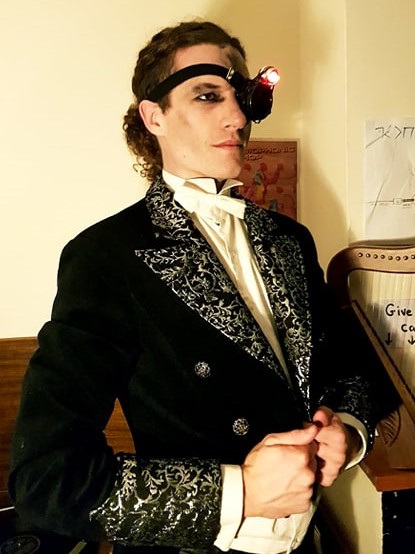

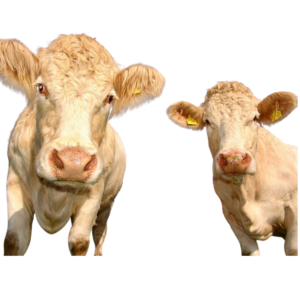
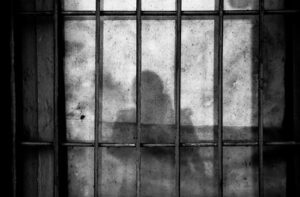
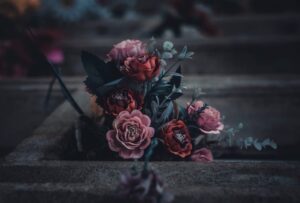
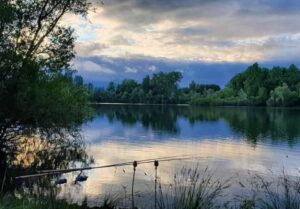

One Response
A well-written story with some chilling scenes. I enjoyed it.